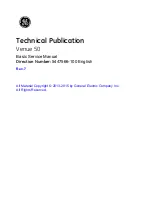
Maintenance
After each test, thoroughly clean the cell and acid cup with water and a
mild soap. Use only alcohol-free cleaners. Alcohol can damage the plexi-
glass cell.
Testing For Leaks
Leaks in the pressure system are the most common case of inaccurate
readings.
1. Periodically inspect the reaction cell and replace the o-rings if they
are dry, cracked, or worn.
2. Clean the pipe-thread connection between the reaction cell top and
the pressure gauge or transducer with a brush and soap suds. If
repairs are necessary, disassemble the pipe-threaded connection
between the reaction cell and the gauge or transducer. Use teflon
tape to re-seal the connection.
3. Check for plugging in the connection between the reaction cell and
the gauge or transducer. Also check the gauge entrance or the
transducer barrel and diaphragm for build-up of calcium deposit
over long periods of time. A warm Chlorox wash should clean these
parts.
4. To check for leaks, pressurize the instrument as described in
“Creating a Calibration Curve” above using a .6 g sample. Let the
unit stand for at least one hour. The pressure within the reaction
cell should remain stable unless leaks are present.
Calibration Data Does Not Give a Straight-Line
If there are no leaks in the system, but results are not giving a straight-
line calibration curve or data is otherwise questionable, check the fol-
lowing:
1. Make sure the scale or balance is clean. Shield the balance from
air currents and vibration as much as possible when weighing sam-
ples or CaCO
3
for calibration.
2. Check the reaction cell for contaminants. Be sure the cell is clean
and dry.
3. Check for impurities in reagents. Moisture in CaCO
3
will result in
low-pressure readings.
OFITE, 11302 Steeplecrest Dr., Houston, TX 77065 USA / Tel: 832-320-7300 / Fax: 713-880-9886 / www.ofite.com
13

































